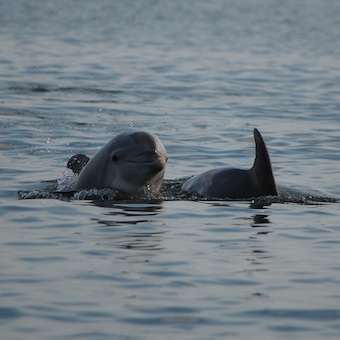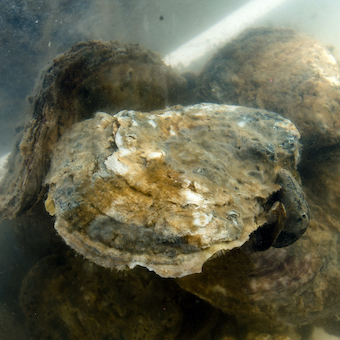Unsubscribe | Update Your Profile
Having trouble reading this email? View it on our website.
|

|

SAVE THE BAY
|
|
|
|
Dear
Friend of the Bay,
We’re now nearing the end of week three in self-quarantine, and I think we can all agree—what a long, strange three weeks it’s been. As we navigate through these unprecedented and frightening times, we can take strength and comfort in the numerous good works people are doing to combat COVID-19, especially our healthcare workers on the front lines. Thank you.
Even as our normal routines have been upended, our work to save the Bay continues in earnest. In fact, today CBF’s Maryland Fisheries Scientist Allison Colden is briefing Congressional Appropriations Subcommittee staffers on the importance of oyster restoration in the Bay. Yesterday we launched a pop-up webinar on Dolphins in the Bay and what they mean for the health of our waters. Also this week, we released an oyster aquaculture report detailing the economic benefits of the shellfish aquaculture industry to Maryland’s economy and the challenges these businesses face right now. Finally, a bit of springtime hope to end with this week: In the midst of these uneasy times, we welcomed into the world a number of baby lambs on our sustainable Clagett Farm in Upper Marlboro, Maryland.
I’ve said it before, and I’ll say it again: Our commitment to the Bay and to you—our steadfast supporters—has never been stronger. Thank you for standing with us in these difficult times, now and always. And please enjoy this week’s Bay stories and resources!
Be safe, healthy, and well.
—Emmy Nicklin, Director of Digital Communications
|
|
|
|
Bringing the Bay Home
Uplifting and educational Bay stories, inspirational videos, and more to bring the Bay home to you and your loved ones.
|
 Jeff Varnon/CBF Staff
Jeff Varnon/CBF Staff
|
|
Dolphins in the Bay
After recent dolphin sightings in Tangier Sound, CBF Educator Steve Kauffman joined Maryland Senior Scientist Doug Myers for a discussion on these playful creatures and what they mean for the health of the Bay. Hundreds tuned in for the webinar yesterday on Facebook and Zoom. You can watch the recording here! And stay tuned for more virtual Bay events coming your way.
|
|
|
|
 Tal Petty/Hollywood Oyster Company
Tal Petty/Hollywood Oyster Company
|
|
|
|
 Chesapeake Bay Program
Chesapeake Bay Program
|
|
Ask an Expert: Why Are Freshwater Mussels So Cool?
In the next episode of our weekly Ask an Expert video series, we learn from CBF's Virginia Senior Scientist Dr. Joe Wood about freshwater mussels—why this remarkable species has captured his heart and why it might hold the secret to improving stream health and restoring the Chesapeake Bay.
|
|
|
|
Learn Outside, Learn at Home
Our new initiative to provide students, teachers, and parents with valuable, curriculum-based resources to connect with the Bay and its rivers while at home.
|
 Rachel Freedman
Rachel Freedman
|
|
Nature Journaling: Becoming a Naturalist
Nature is everywhere you are. Finding it is easy, especially if you are curious about clouds, trees, weather, stars, rocks, birds, ants, or anything else outside. True magic lies in your curiosity about these everyday things. Take a look at our latest set of nature journal prompts perfect for students stuck at home or teachers conducting virtual lessons.
|
|
|
|
 Donnie Biggs
Donnie Biggs
|
|
Oyster Filtration Video with Lesson Plan
In this video, CBF Educator Kellie Fiala shows us the filtering power of oysters. After watching it, work with your family members to figure out your family’s water usage and then calculate how many oysters you’d need to filter that amount of water with our Oyster Power Worksheet. Keep an eye on our Student Investigations and Activities page for more fun learning opportunities.
|
|
|
|
What You Can Do
|
- You can still enjoy the Bay’s delicacies during these stay-at-home times. Here’s a list of oyster aquaculture businesses ready to deliver to you in a safe and easy way.
- Now more than ever, protecting our nation’s public health is essential. Take action now to tell EPA: Fulfill your mission to protect human health by safeguarding the air we breathe, water we drink, and land on which we live.
- Were you forwarded this email? Like what you see? Sign up for our weekly Save the Bay e-newsletter—a weekly roundup of uplifting Bay stories, inspirational videos, helpful teaching resources, and much more.
- Help us continue to bring the Bay to you at home each week. Give today!
|
|
|
|










